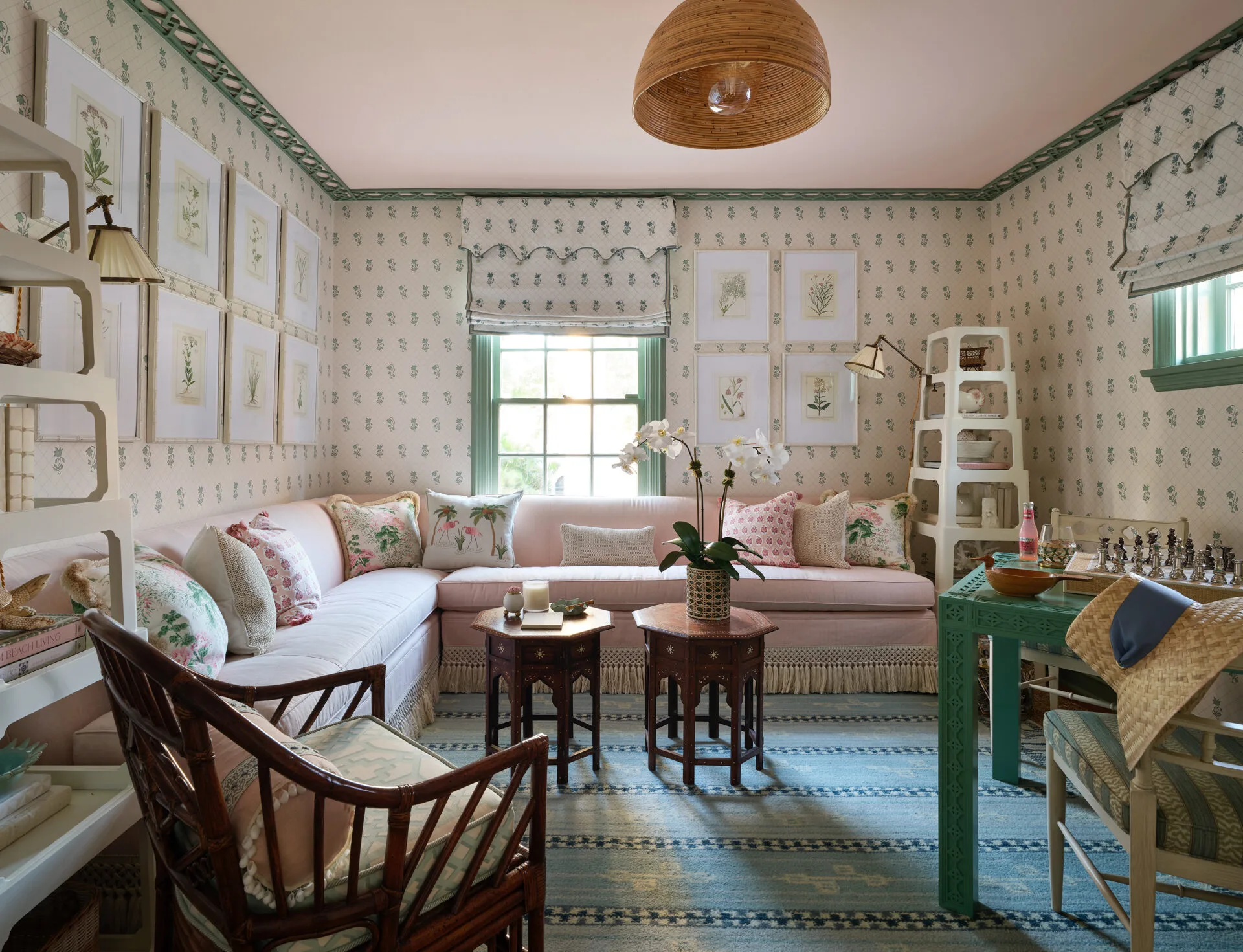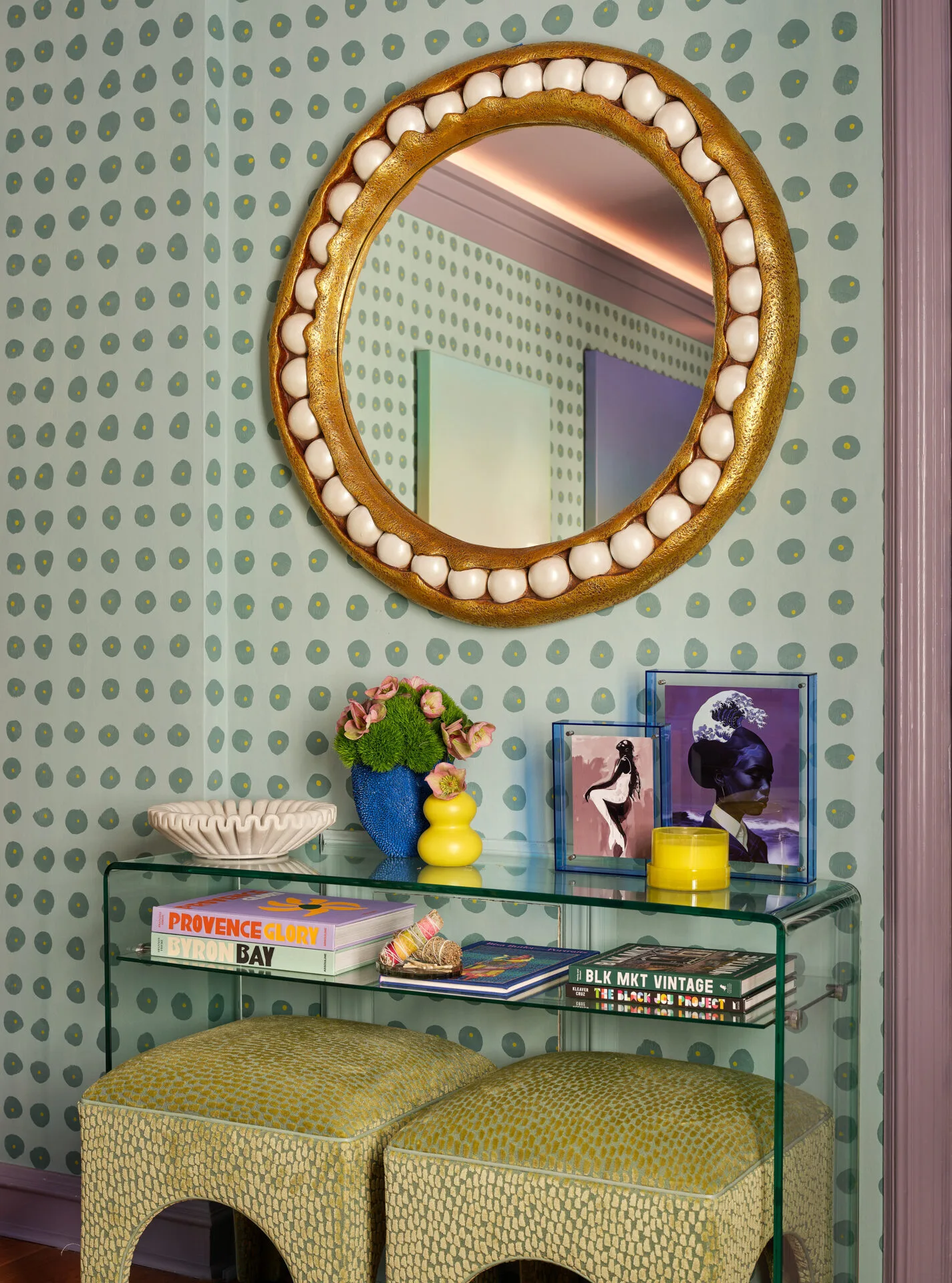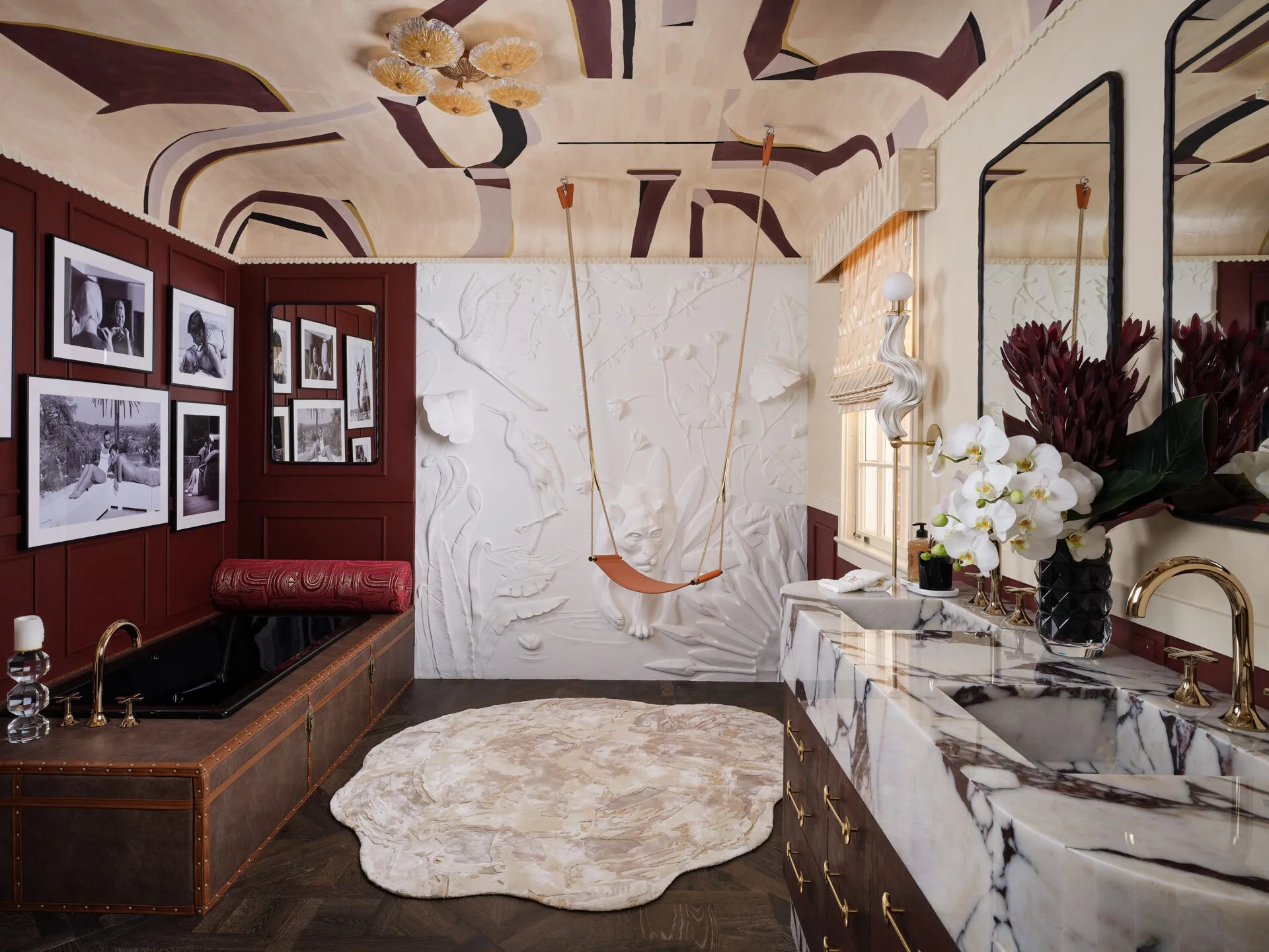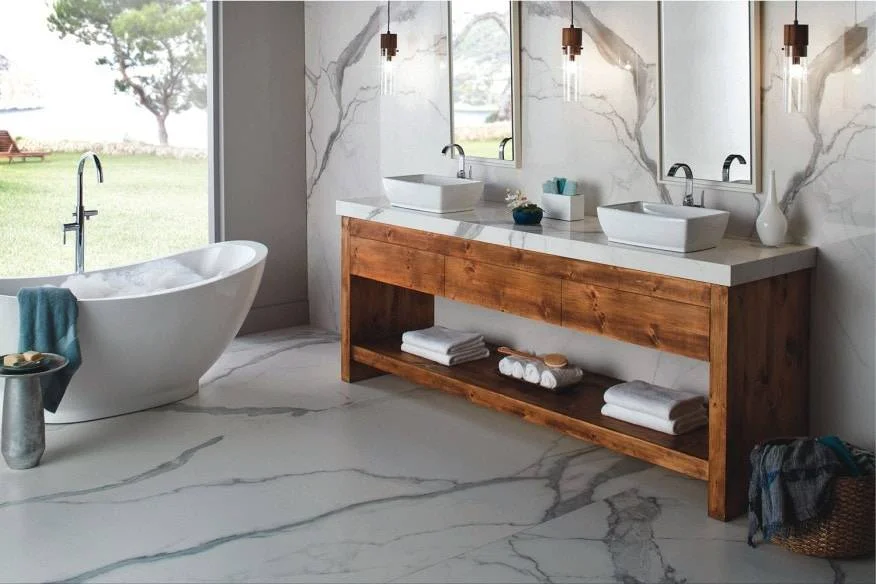
What is Porcelain?
Have you seen walls or ceilings covered in very large, marble-looking slabs? That may just be porcelain! Porcelain are giants of the industry that can be used in a multitude of ways, and bring along quite a few benefits.
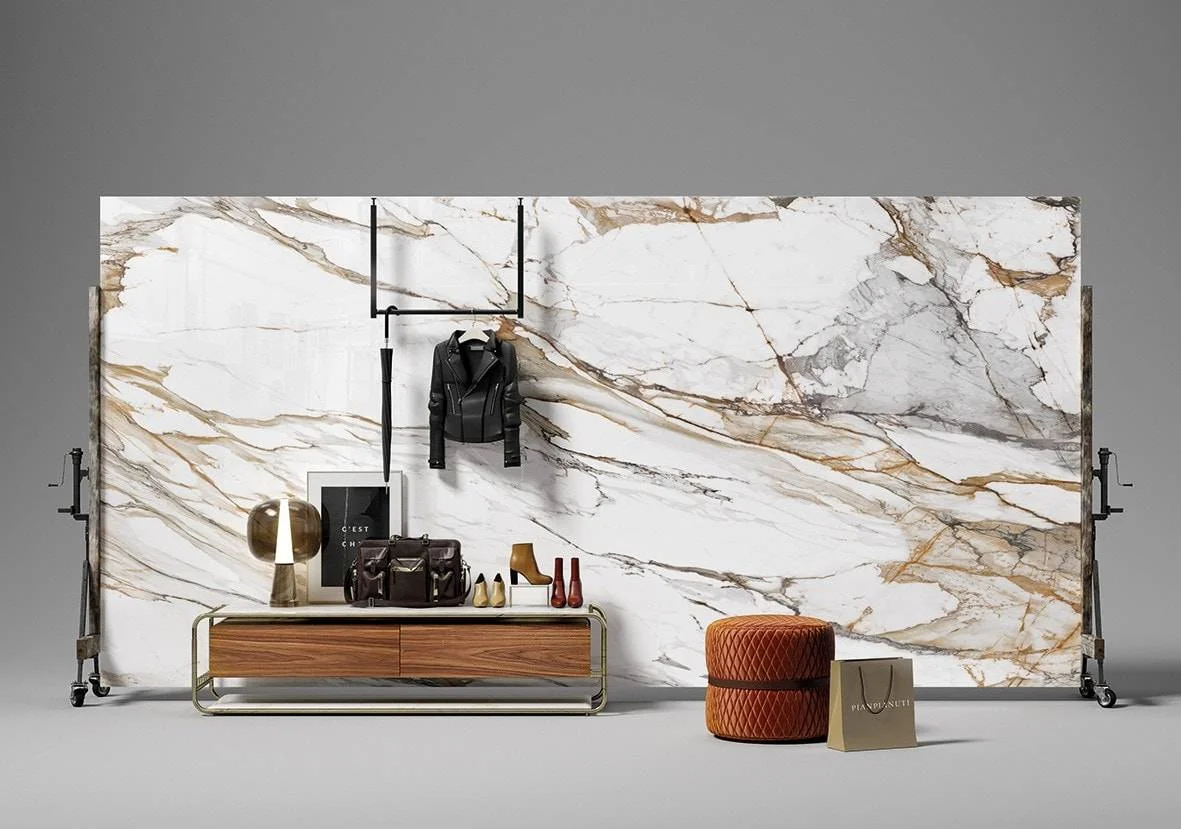
History of Porcelain
The origin of porcelain goes back to the Tang dynasty (618-907) in China. A specific mixture of kaolinite (a clay-like material normally composed of feldspar, silica, and mineral oxides) and petuntse (a historic Chinese term for a feldspathic rock) was fired in a kiln at extremely high temperatures to produce a dense, hard, glazed material that made it water and stain resistant.
Nowadays, porcelain and ceramic are used interchangeably. The English word ‘ceramicʼ derives from ‘keramosʼ meaning ‘potteryʼ in Greek. However, its origin is found in Sanskrit and means ‘to burnʼ, describing the process of firing the tiles in an oven under high temperatures, making them hard enough to withstand the elements.
Nowadays, porcelain and ceramic are used interchangeably. The English word ‘ceramicʼ derives from ‘keramosʼ meaning ‘potteryʼ in Greek. However, its origin is found in Sanskrit and means ‘to burnʼ, describing the process of firing the tiles in an oven under high temperatures, making them hard enough to withstand the elements.

Properties of Porcelain
Modern porcelain slabs are coated with a pigmented glaze using the latest inkjet technology, which allows them to look just like natural stone, such as marble and limestone, or even concrete. There really is no limit to what kind of look manufacturers can accomplish using computers and inkjet technology.
The slabs are available both matte and polished, come in sizes up to 5×10 feet, and range in width from 3mm to 20mm. Porcelain should only be installed by professional fabricators with certified tools as it requires precision in handling.
Porcelain slabs are durable, versatile, and low maintenance once installed. They are stain proof, so discoloration is not a problem. Fired at over 1000 degrees, porcelain is heat resistant and withstands hot pots and pans straight from the oven. Sealing is not required unlike natural stones, and being UV light resistant makes it an excellent choice for outdoor uses as it wonʼt fade in the sunlight.
Last but not least, porcelain is environmentally friendly and recyclable as it is made of 100% natural, clay-based materials.
The slabs are available both matte and polished, come in sizes up to 5×10 feet, and range in width from 3mm to 20mm. Porcelain should only be installed by professional fabricators with certified tools as it requires precision in handling.
Porcelain slabs are durable, versatile, and low maintenance once installed. They are stain proof, so discoloration is not a problem. Fired at over 1000 degrees, porcelain is heat resistant and withstands hot pots and pans straight from the oven. Sealing is not required unlike natural stones, and being UV light resistant makes it an excellent choice for outdoor uses as it wonʼt fade in the sunlight.
Last but not least, porcelain is environmentally friendly and recyclable as it is made of 100% natural, clay-based materials.
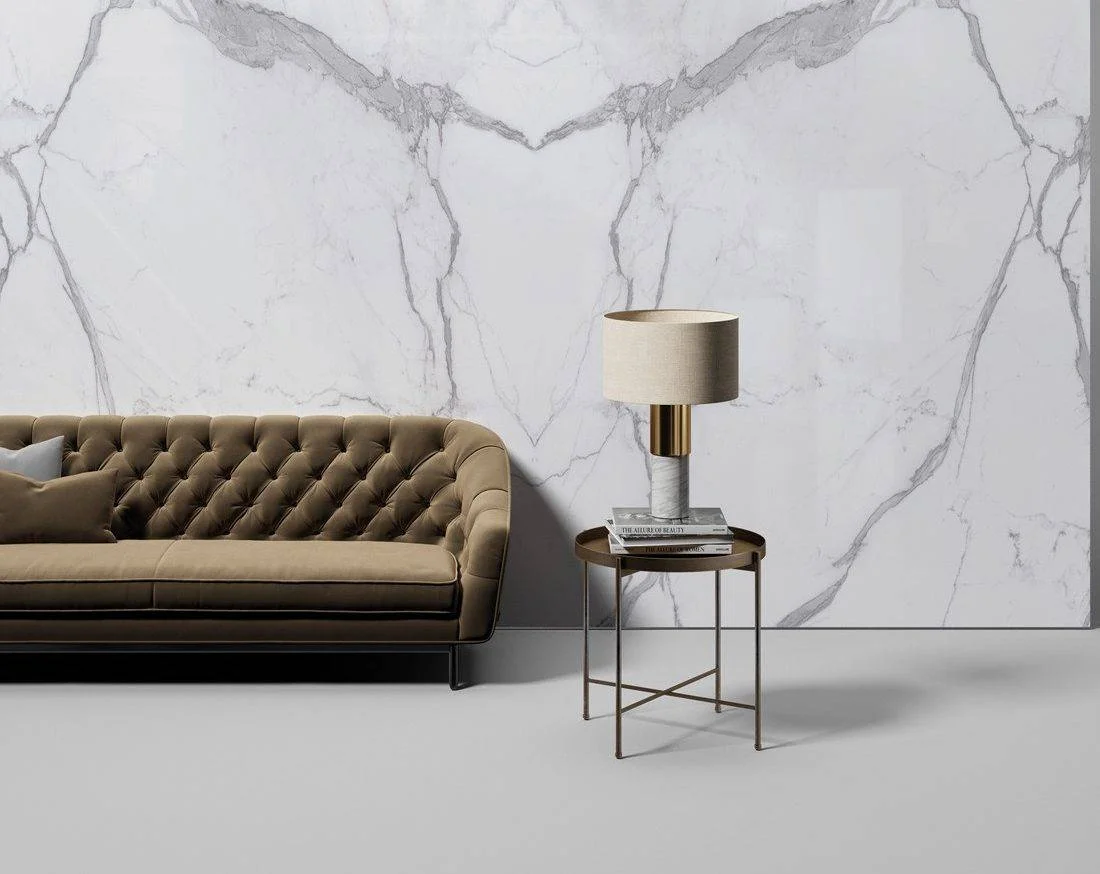
Porcelain Care
Porcelain is low maintenance and very easy to clean. It has a waterproof surface and stays cleaner longer because it does not have pores for bacteria to grow in.


